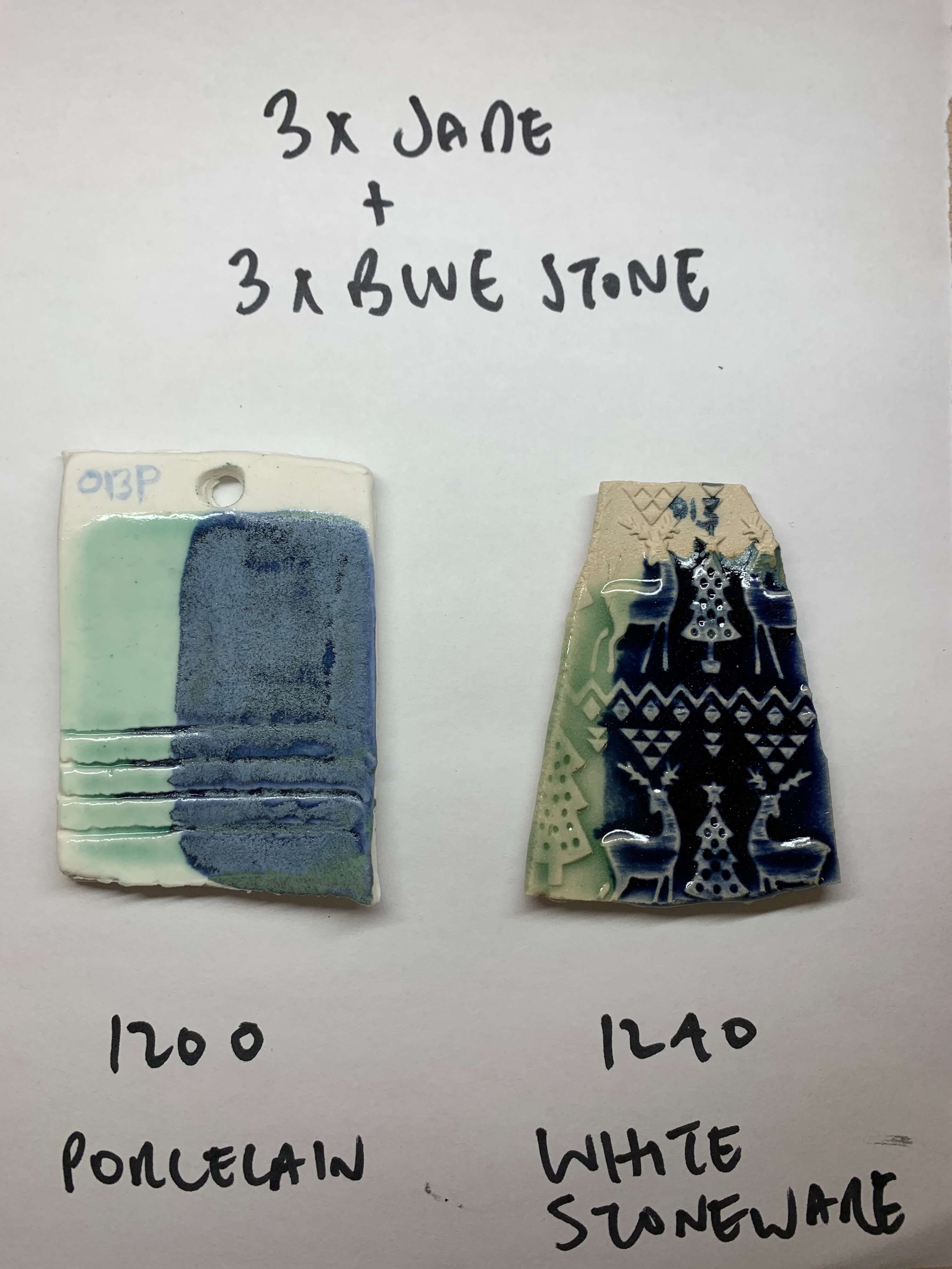Studio Snap-Shot: Glaze Results Comparisons
The previous Studio SnapShot showed 110 Amaco Potters Choice Glaze results from a 1200 degree Celcius firing. I’ve since been recreating these combinations in a 1240 firing and am about halfway through completing a full set at 1240.
There’s been a few surprises and variations. Some glazes prefer 1200 and some prefer 1240. I’ll expand on this when the full set is out but for now, below are a few glazes side by side at different temperatures.
The top glaze is applied all over the test tile in 3 layers. Once this is dry, the second glaze is applied in 3 layers over the right side of the tile. Ideally, I would have applied them all on one clay body as it can alter the glaze finish but I used what tiles I had available. The clay types are written underneath the test tile.
Each firing schedule ran at:
0 - 300 degrees @ 60 degrees per hour.
300 - top temperature @ 110 degrees per hour
10-minute soak.
Have a look and let me know your thoughts.







If you want to give the Amaco Potters Range a try, I’ve a Love: Glazes Pinterest board with a collection of stunning glaze combinations and recipes to get dreamy-eyed over, or you can check out the Amaco Website which has downloadable PDFs with drool-worthy combinations.
I bought my stock from Scarva Pottery Supplies because I’m fortunate to live just a 30-minute drive away, but they ship worldwide.
This has been a relatively quick way (in comparison to mixing glazes from raw ingredients), to get such a number of glazes out of the kiln, and I’ve heard and seen such wonderful reviews from this range that I’m glad I started this new glaze exploration with them and I look forward to updating you with the next discoveries!
I’d love to hear your experience with the Amaco Potters Choice Range - any tips for this total Amaco Newbie? Hit the comments section, I’m all ears!
Stay in touch!
The best place to hear updates, get exclusive discounts and a dose of inspiration for your art, is on Studio Notes: a twice monthly email from my studio to yours…










Why you should Stop and Smell the Roses, and how it helps your art.
Plus, The Porcelain Roses Collection